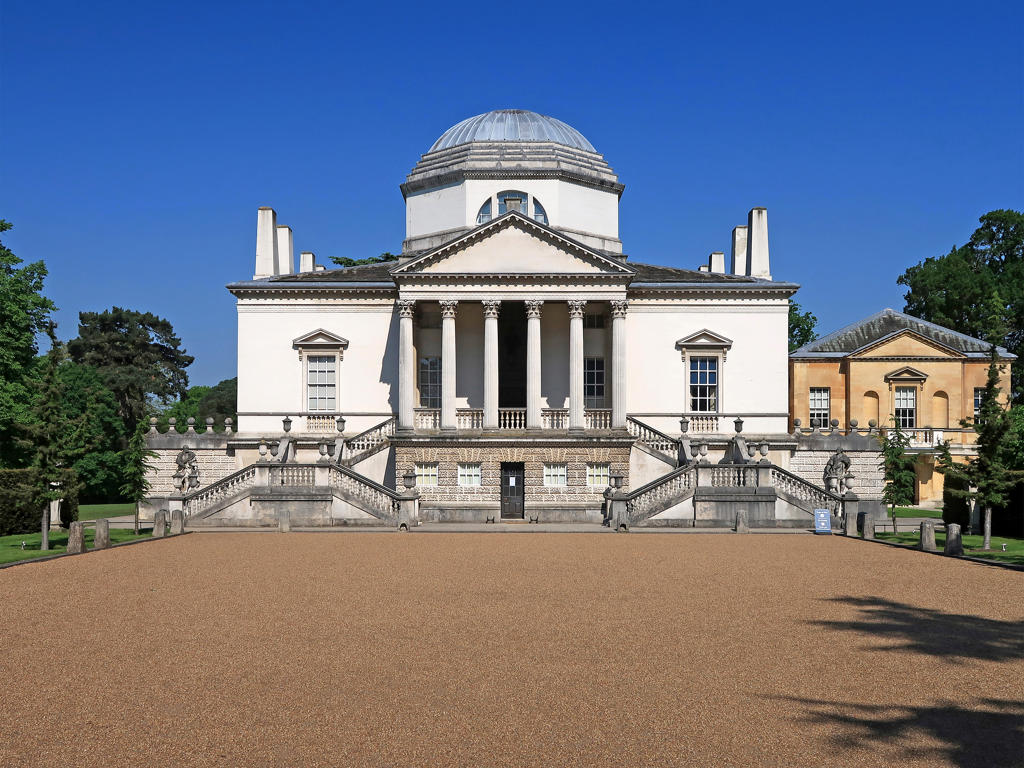About Chiswick house
The elegant Palladian architecture of Chiswick House stands as a testament to the influence of classical design on English country houses. Designed by Lord Burlington in the early 18th century, the villa is a masterpiece of symmetry and proportion, inspired by the works of the Italian architect Andrea Palladio. The building’s façade, with its grand portico and Corinthian columns, immediately draws the eye, while the octagonal dome adds a sense of grandeur and light to the interior. The house is surrounded by beautifully landscaped gardens, which were among the first in England to reflect the naturalistic style that would later become known as the English landscape garden.
Chiswick House is not just an architectural gem but also a cultural landmark that reflects the tastes and aspirations of the English aristocracy during the Georgian era. Built between 1725 and 1729, it served as a venue for entertaining and displaying Lord Burlington’s extensive art collection. The house and gardens have been meticulously preserved, offering visitors a glimpse into the opulent lifestyle of the 18th-century elite and the intellectual currents of the time, which favored classical antiquity and the arts.
Right Where It Began
Chiswick House marks a pivotal moment in architectural history, where the classical ideals of the Renaissance were reinterpreted for a modern age. Lord Burlington, an avid traveler and collector, was deeply influenced by his tours of Italy, where he studied the works of Palladio. His vision for Chiswick House was to create a space that embodied the harmony and beauty of classical architecture, a vision that would inspire generations of architects and designers. The house became a center for the arts and intellectual exchange, frequented by luminaries such as Alexander Pope and William Kent, who contributed to the design of the gardens.
Plan your perfect trip to London with Travo! Download now and start exploring.
Marks of Time
The historical elements of Chiswick House are visible in its architectural details and the layout of its gardens. The use of Portland stone for the exterior, the intricate stucco work, and the classical motifs throughout the interior all speak to the craftsmanship and artistic vision of the period. The gardens, with their sweeping vistas, serpentine paths, and strategically placed statues, reflect the shift from formal, geometric layouts to a more naturalistic approach. These elements not only highlight the aesthetic preferences of the time but also the broader cultural movement towards embracing nature and the classical past.
Stories in Stone
The features of Chiswick House tell stories of artistic innovation and cultural exchange. The villa’s design, with its emphasis on symmetry and proportion, was revolutionary in its departure from the more ornate Baroque style that preceded it. Inside, the richly decorated rooms, adorned with paintings and sculptures, reflect Lord Burlington’s passion for the arts and his desire to create a space that was both beautiful and intellectually stimulating. The gardens, designed by William Kent, are a testament to the evolving landscape design, where art and nature were seamlessly integrated to create a living canvas.
Details That Speak
Every detail of Chiswick House has been carefully considered to convey a sense of elegance and refinement. The grand staircase, with its intricate ironwork and marble steps, serves as a focal point of the interior, leading visitors through the house’s opulent rooms. The ceilings, adorned with frescoes and gilded moldings, reflect the influence of Italian art and the desire to create a space that was both grand and inviting. In the gardens, the placement of each statue and the curve of each path were designed to create a sense of discovery and delight, inviting visitors to explore and reflect.
Living History
Today, Chiswick House continues to be a place of cultural and historical significance. It serves as a venue for exhibitions, concerts, and events, bringing the arts and community together in a setting that has inspired creativity for centuries. The house and gardens are open to the public, offering a unique opportunity to experience the beauty and history of one of England’s most important architectural landmarks. As visitors walk through the halls and gardens, they are not only stepping into the past but also engaging with a living history that continues to evolve and inspire.

Location
Grand Allee, W4 3EP, London





